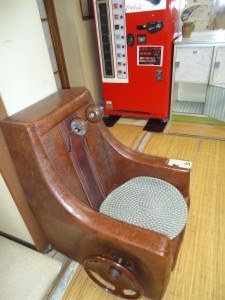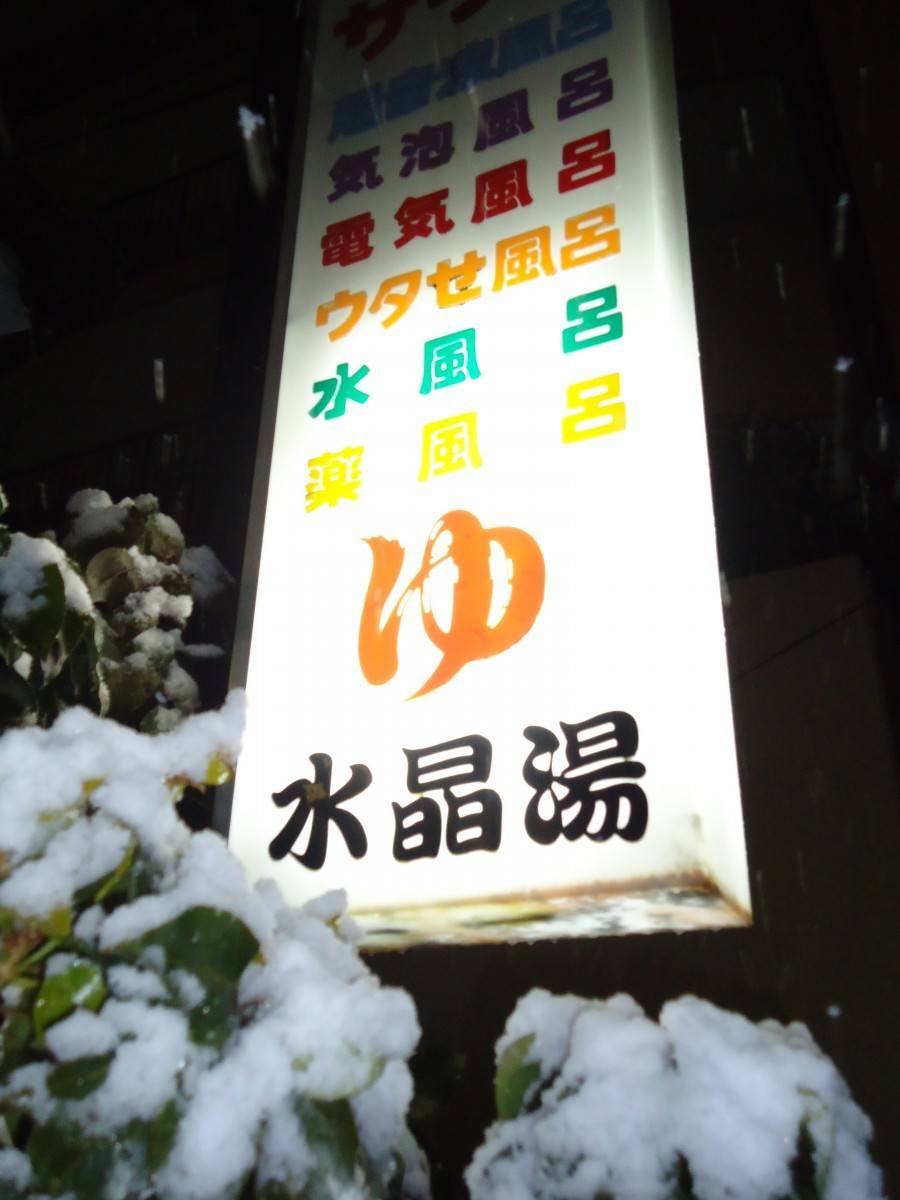Like this post? Help us by sharing it!
Written by InsideJapan Tours tour leader, Steve Parker
Many people have heard of the famous Japanese hot spring baths (onsen) – water heated geo-thermally and then pumped into often landscaped bathing areas to create the perfect way to relax – washing and then soaking away till as red and shrivelled as a pickled plum.
But less well-known are the urban bath houses known as sento. Although they have been in service for years, these establishments, usually fed with piping hot water from boiler rooms, became especially important in the post war years, when urban reconstruction left fewer families with their own baths. Today – these social relics perhaps reflect more austere, impoverished times and so are for many, certainly those with a prudish outlook, a place not to be seen dead in.
For me however, moving back to Japan recently – in an unknown area on my own, winter snow carpeting the streets outside and with little money to spend on a Saturday night out on the town, my discovery of a local bath house was a joy.
I was quite desperate to get out of my small weekly mansion (i.e. short term rabbit hutch-sized flat) but given my extra tight budget, a night out drinking was a no go. I therefore decided to head out for a long night walk around the safe streets of Nagoya, yet barely 10 minutes later, I happened across a classic 400yen snippet of mid-20th century urban Japanese culture, namely the neighbourhood bath house.
Sadly these establishments are disappearing with declining popularity – their curtained entrances and tall chimney stacks replaced by car parks and anorexic apartment blocks. With their futures seemingly uncertain, part of their charm is that they are seldom renovated or updated in any way. They remain trapped in time, almost a mini museum of post war Japan. With snow crunching underfoot and a bitingly cold wind, it took little convincing that I should curtail my walk and go bathe with the locals!
On entering, it was shoes off then the usual struggle to fit them into the locker – 3 attempts and the door finally stayed closed. I paid my 400 yen to the elderly local woman – sat with her raised vantage point into both male and female changing areas! Then through the masculine blue curtain to the men’s changing area – all as expected – cigarette smoke, elderly men in thermal long-johns, bamboo strip matting on the floor, milk vending machine, shabby old lockers, Hitachi hairdryers from the 60s and surely one of the world’s first all-in-one torture/massage chairs!

Next – a quick undress and into the bathing area, armed with small towel, razor and body soaps. Typically, this Sento offered the tiniest of plastic stools to sit on, barely 6 inches off the ground! One wall was lined with sets of archaic push top taps – one ice cold the other molten, and accompanying shower, running tepid water. My sink came in the form of a small yellow bowl – one of several strewn all around the bathing area. After scrubbing till I squeaked, a wide range of baths were on offer – a bog-standard hot bath at 42 degrees, jet bath, herbal bath, and then those for humans made of sterner stuff – the 16-degree cold bath and denkiburo electric bath!
Most baths I was more than happy to dip into, although the cold bath took a fair amount of puffing and blowing as I lowered myself in. The electric bath however – not for me! Not that I am aware of suffering from the following ailments – high blood pressure, blood disorders, heart conditions, susceptibility to fainting, nor was I recovering from any sickness – yet the list of warnings was enough to put me off. Oh, and of course the weird feeling of electric currents pulsating through the water and my body – expanding and contracting muscles twice a second in the process!
Everything was pretty much as I had expected and indeed wanted from my bath house experience though. No surprises in a very comfortable environment until…I looked around at the other bathers in the warm mist and noticed several tattooed bodies.
Unlike the feeble coin-sized excuse for a tattoo on my back, these where true markers of the Yakuza, the Japanese mafia. Ornate dragon designs draped over shoulders and down to the backside – rarely seen in public save for occasional festival events such as the Sanja Matsuri in Asakusa, Tokyo.
I then realised that I had not seen any “tattoos forbidden” sign at the bath house entrance as is often found in these places, always prompting me to conceal my innocent yin-yang symbol from view, for fear of ejection. The designs on these guys were really incredible and although you don’t want mafia types catching you staring, it was hard not to admire the artistry in their designs and imagine the tear provoking pain endured whilst they were applied.
I got a great look at one design – Kannon – the Buddhist deity of mercy wrapped in a dragon. I then realised that the particular fellow had been scrubbing feverishly for what must have been half an hour, before sitting under his shower – head in hands with water rinsing away his…guilt? Self-loathing? Stress? Terror? What had this man done or seen at work today?!
I left him to his apparent angst along with the other tattooed types and headed back to the cool of the changing room, where away from the din of running water, a friendly local guy struck up conversation. Thankfully, unembellished with body paint, and on realising I spoke Japanese, the kind Mr Yamada invited me for a bowl of hot noodles and some very powerful sweet potato vodka – a good way to maintain that warm glow for the walk back through the snow to my temporary home!
My night had turned out to be an unexpected surprise – Japan is so rewarding for those willing to take a chance and be a little spontaneous. I returned for the next 3 nights to the same bath house for my local experience, relaxation and a little edginess in form of my fellow Yakuza bathers.


